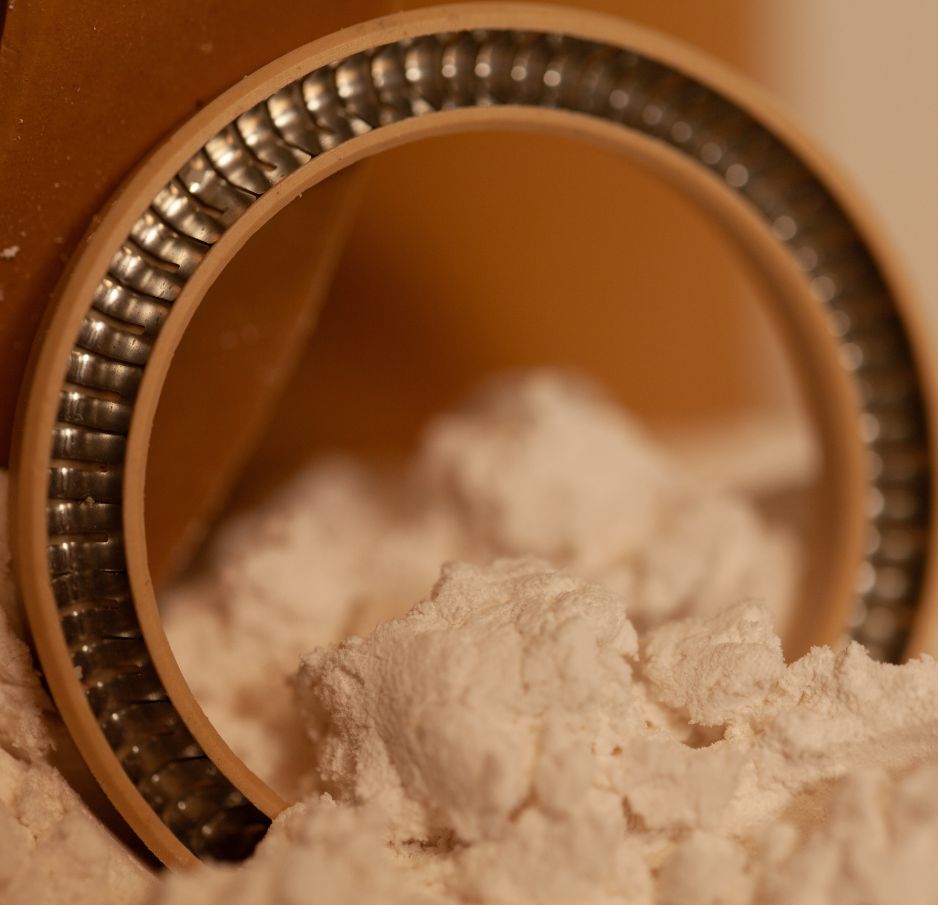Reversible elastic deformations

Elastomers are materials that can maintain their elasticity even after major deformations. That is, elastomers, subjected to an applied load, can return to their original shape when this load is reduced. This feature makes these materials frequently indispensable for the creation of both static and dynamic seals.
The elastomer family contains various types of compounds each offering very different resistances.
- NBR, for example, is a highly oil resistant compound, with a thermal range that makes it ideal for various mechanical and hydraulic applications.
- EPDM, on the other hand, offers high resistance to sanitising products and high temperatures, so it is widely used in the food and pharmaceutical industry.
- As well as having a high thermal resistance, FPM has a chemical resistance that covers a wide range of components that are aggressive for other elastomers, and is therefore widely used in the chemical industry.
- Silicones and MVQs have the lowest mechanical resistance of all elastomers but they also have a very high thermal resistance for both high and low temperatures, which are often used for static seals.
Technical Datasheets
Elastomer with excellent elastic properties, resistant to vegetable fats, animals and mineral oils; it is not suitable for use in solvents and flammable fluids.
Elastomer with excellent elastic properties, resistant to vegetable fats, animals and mineral oils; it is not suitable for use in solvents and flammable fluids.
Elastomer with excellent elasticity, resistant to abrasion, oils and greases; it is not resistant to aromatic and polar solvents, concentrated acids and alkalis.
Elastomer with excellent properties similar to SINTEK H-NBR, but with a hardness equal to 90 Shore A and compliant with the “FDA” certification.
Elastomer with excellent elasticity, chemical and thermal resistance, particularly used in applications where high temperatures and aggressive environments are expected.
Elastomer with characteristics similar to SINTEK H-NBR and certified “NORSOK M-710” for applications requiring resistance to explosive decompression.
Elastomer with characteristics similar to SINTEK FPM, is used in the food & beverage sector, as it complies with the “FDA”, “3A Sanitary” and “1935/2004” certification.
Elastomer with characteristics similar to SINTEK FPM and certified “NORSOK M-710” for applications requiring resistance to explosive decompression.
Elastomer with a high resistance to high and low temperatures, chemical resistance and a high elastic return.
Elastomer with characteristics similar to the SINTEK MVQB and used in the Food & Beverage sector, as it complies with the “FDA” and “10/2011” certification.
Elastomer with high heat resistance, good vapor resistance and excellent electrical insulation. This is a certified “FDA” and “1935/2004” material.
Elastomer with the same properties as SINTEK EPDM FDA but with a hardness equal to 81 Shore A. This is a certified “FDA”, “1935/2004” and “KTW” mateirle.
TPC-ET thermoplastic polyester elastomer with good aging properties at high temperatures. Excellent chemical and thermal resistance.
Elastomer with excellent abrasion and high temperatures resistance. Suitable for food & beverage applications as it is FDA and 1935/2004 complaint.
Elastomer with characteristics similar to SINTEK FPM ones, it is used in the food & beverage industry, as it complies with the “FDA” and “1935/2004” certifications.
Elastomer with great resistance to both high temperatures and steam. It has also excellent electrical insulation characteristic . It is “FDA” and “1935/2004” approved.
FDA approved elastomer. It is detectable but unsuitable for contact with fats and oils.









